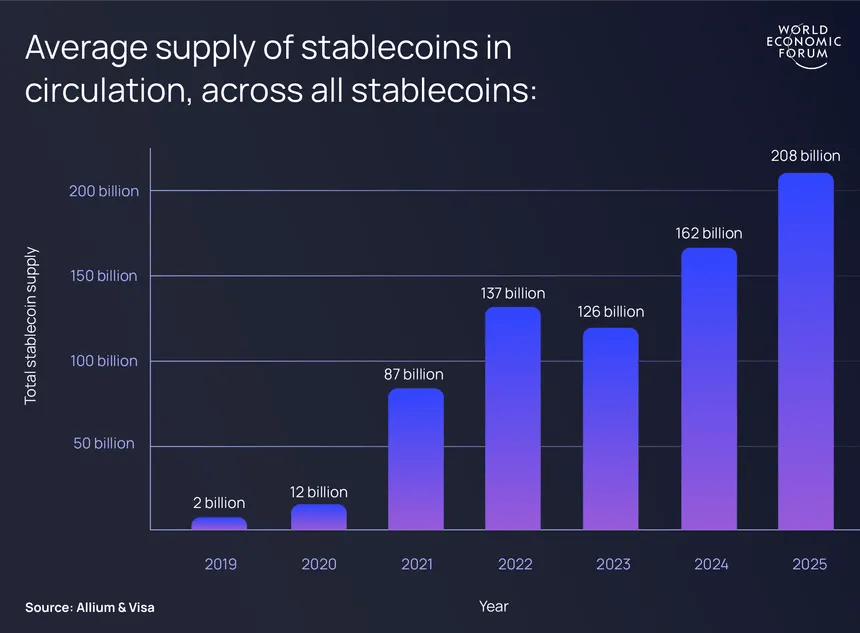- Notes From The Week
- Posts
- NFTW: The Return of Kings and the Act of Trust
NFTW: The Return of Kings and the Act of Trust
This week we explore how Clipse's triumphant return illuminates the nature of artistic authenticity, and examine how the GENIUS Act might reshape the infrastructure of digital money.
What’s good everyone? Hope we’ve all been well. It's been a minute since I've been in your inboxes. Life has a way of pulling you in different directions, but I'm glad to be back with you all. Big shout out to all the people that reached out asking when the next newsletter would be out; it’s nice to know that in some ways this space of the internet provides value for you. This week finds me reflecting on two seemingly unrelated developments that, upon closer examination, reveal fascinating parallels about how trust, authenticity, and infrastructure evolve over time. Sometimes the most profound insights emerge when we examine cultural moments alongside technological shifts uncovering the dynamic interplay between human expression and innovation.
The GENIUS Act: Building the Rails for Digital Money
In Washington last week, we saw the passage of the GENIUS Act (Generating Earnings and New Innovations in Unleashing Stablecoins) which marks a quiet but powerful shift in how the U.S. is beginning to formalise its digital currency infrastructure. For those who've been following the regulatory uncertainty that has defined crypto's relationship with traditional finance, this moment feels seismic (and a tad redemptive).
The act provides much-needed clarity for stablecoin issuers, essentially creating a federal framework for what have been state-by-state regulatory patchworks. More importantly, it signals that the U.S. government has moved from viewing stablecoins as a threat to recognising them as essential infrastructure for digital commerce. This reminds me of the "permanent infrastructure" concept I discussed when analysing Telegram's role in crypto communities. Just as Telegram became indispensable by providing reliable, neutral ground for crypto projects to build trust networks, stablecoins are becoming the foundational layer for digital transactions. The GENIUS Act essentially acknowledges this reality and provides the regulatory scaffolding to support it.
The implications extend far beyond crypto trading. Consider how this regulatory clarity might accelerate the "intentional seasonality" I wrote about global professionals moving fluidly between countries. When stablecoins have clear legal status, cross-border payments become frictionless in ways that traditional banking infrastructure simply cannot match. That developer in Lagos working with a London team can now receive payments instantly, without worrying about banking delays or regulatory grey areas.

In 2024, total stablecoin transfer reached $27.6 trillion, surpassing Visa and Mastercard's combined transaction volume by 7.68%. Tether has an average daily trading volume of over $75 billion, more than all other stablecoins combined. USDC's monthly transaction volume reached $1 trillion in November 2024 alone, surpassing $18 trillion in all-time volume. The geographic distribution of stablecoin adoption reveals a profound change in global finance, with Sub-Saharan Africa leading the world at 9.3% of residents, and Nigeria at 11.9%. These stablecoins are often used as a hedge against currency instability and access to global markets.
The Pharaohs Return: Clipse and the Authenticity Question

After a 15-year hiatus, Pusha T and Malice have reunited as Clipse with their album “Let God Sort Em Out”, and the result feels like watching master craftsmen return to their workshop. What strikes me most isn't just the quality of the music though tracks like "Birds Don't Sing" showcase their unchanged chemistry but what their return reveals about authenticity in an increasingly artificial world.
Clipse built their reputation on what we might call "narrative authenticity"; their stories of Virginia Beach drug dealing weren't just rap personas but lived experiences that informed every bar. In an era where AI can generate endless variations of trap beats and ghostwriters craft personas from whole cloth, Clipse's return feels like a statement: real recognises real, and authentic experience cannot be manufactured.
This connects to something I explored in my piece on taste in an AI world. While machines can analyse the patterns that make Clipse's wordplay effective the internal rhymes, the specific slang, the narrative structure they cannot replicate the lived experience that gives weight to their bars. That specificity, that cultural context, that earned authority these remain uniquely human capabilities.
What's particularly fascinating is how their reunion navigates the evolution of their individual personas. Pusha T has spent the last decade cementing his status as rap's premier lyricist, while Malice found faith and stepped away from glorifying the very lifestyle that made them famous. Their new album doesn't resolve this tension it embraces it, creating space for both reflection and celebration, repentance and pride. It's a mature approach to artistry that acknowledges complexity rather than demanding binary choices.
"Chains and Whips" by Kendrick Lamar is a standout track that showcases the depth of contemporary rap artistry. The song's central metaphor, "Beat the system with chains and whips," references historical oppression and modern symbols of wealth, such as jewellery and luxury cars. Kendrick's verse, balancing the spiritual with the visceral, is particularly compelling. His wordplay around "gen" and his verses about Genesis, Gen Z, genocide, and generational wealth are both clever and ambitious, showcasing how hip-hop continues to evolve as an art form. Malice's verse about John 10:10 and the weight of transformation is genuine and powerful, connecting material excess and spiritual poverty to real experiences.
The Wrap Up
As I run through the Clipse's new album while reading about stablecoin regulations, I'm struck by how both represent responses to a fundamental question of our time: How do we build trust in an age of infinite replication?
For artists, the answer seems to be doubling down on irreplaceable human experience the stories only you can tell, the perspectives only you can offer. For technologists, it's about creating systems so transparent and reliable that trust becomes algorithmic rather than interpersonal. For those of us navigating between these worlds whether as global professionals, cultural observers, or simply people trying to understand our rapidly changing landscape the lesson might be about recognising when underground innovations are ready for institutional adoption, and when institutional frameworks are flexible enough to accommodate authentic innovation.
The next time you hear a perfectly crafted Pusha T verse or make a frictionless international payment using stablecoins, remember: you're experiencing the fruits of systems that spent years proving themselves in the margins before earning their place in the mainstream.
Sometimes the most revolutionary developments are the ones that make complex realities feel simple and natural whether that's rap lyrics that make street economics sound like poetry, or financial technology that makes global commerce feel local. And as you strive to be the best version of yourself and authentically communicate that into your universe, if people don’t rock with you at first then we let God sort ‘em out.
Until next week. Peace.
